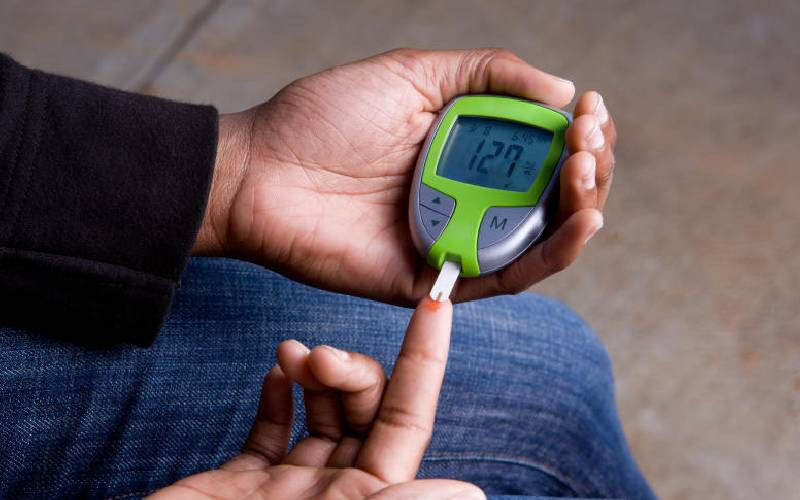
The process of childbirth does not end when the baby is born. After the baby is delivered, the uterus contracts further to release the placenta. These contractions also mechanically compress the numerous blood vessels that feed the placenta, consequently preventing bleeding by increasing coagulation.
If it happens that the uterus fails to contract as required, the new mum suffers heavy bleeding after delivery.
Uterine atony can occur in both vaginal and caesarean deliveries. The uterine muscles fail to fully respond to oxytocin, the hormone that stimulates uterine contractions during childbirth.
Failure of sufficient contractions allows rapid and free bleeding of the blood vessels. This results into continuous blood loss that can sometimes be concealed in the uterus.
According to the World Health Organisation, failure of adequate uterine contractions after childbirth is the leading cause of postpartum haemorrhage.
Postpartum haemorrhage is the world’s leading cause of maternal deaths contributing to approximately 127,000 deaths annually.
According to the County Innovation Challenge Fund E-Newsletter Issue 8, 34 per cent of maternal deaths in Kenya are attributed to postpartum haemorrhage and uterine atony contributes to 74 per cent of such cases.
Risk factors
Parity
Uterine atony is more common in women who have just had their first child as well as those delivering multiples such as twins and triplets. Women who have delivered more than five babies prior may also be at an elevated risk.
In some cases, women with excessive quantities of amniotic fluid — a condition called polyhydramnios are prone to uterine atony. Uterine atony can recur in a subsequent pregnancy.
Prolonged labour
A prolonged first stage of labour –where contractions and dilations of cervix begin — may prompt use of labour inducing medications such as synthetic oxytocin.
Excessive use of such drugs and general anaesthesia has also been linked to desensitising the body, reducing uterine smooth muscle contraction.
Additionally, medications used to treat seizures in hypertensive pregnant women can negatively impact uterine contraction. Close monitoring is practiced when the administration of such drugs is involved.
Presence of uterine fibroids
Existence of uterine fibroids creates an additional link to uterine atony.
Overdistended uterus
Decreased uterine muscle tone is observed in a uterus that is larger than usual. Excessive enlargement of the uterus could be as a result of a larger than average baby (fetal macrosomia), multiple babies or higher amounts of amniotic fluid.
It is important to note that uterine atony can occur in women who do not fall into the categorised risk factors. Of more importance is for you to attend antenatal visits and share history with your medical practitioner for monitoring of probable complications.
How is it diagnosed?
Excessive bleeding after birth and a soft, relaxed uterus is indicative of uterine atony. The number of pads soaked may estimate blood loss.
Your doctor may make a physical exam and take measurements of pulse rate, blood pressure and red blood cell count.
An ultrasound can also be used for confirmation. Patients usually feel lightheaded and fatigued due to low blood pressure. Complications such as anaemia and shock are life threatening.
Treatment
The World Health Organisation’s 2017 Global Recommendations for treatment of postpartum haemorrhage includes the early use of intravenous tranexamic acid (TXA) within three hours of birth regardless of the cause of bleeding.
It works by slowing down the breakdown of blood clots, increasing coagulation, making it different from standard drugs that typically help the uterus to contract.
Other treatment methods
Uterine massage: manually compressing the uterus through the abdominal wall with one hand and the other in the birth canal pushing against the uterus.
Medications to contract the uterus such as oxytocin.
Blood transfusion: Blood products added to replace lost blood.
Surgery: To tie blood vessels.
Uterine artery embolisation: Administering small substances to block uterine arteries blood flow.
Hysterectomy: A surgery to remove the uterus. It is performed as the last option when other treatments fail.
 The Standard Group Plc is a multi-media organization with investments in media
platforms spanning newspaper print
operations, television, radio broadcasting, digital and online services. The
Standard Group is recognized as a
leading multi-media house in Kenya with a key influence in matters of national
and international interest.
The Standard Group Plc is a multi-media organization with investments in media
platforms spanning newspaper print
operations, television, radio broadcasting, digital and online services. The
Standard Group is recognized as a
leading multi-media house in Kenya with a key influence in matters of national
and international interest.










